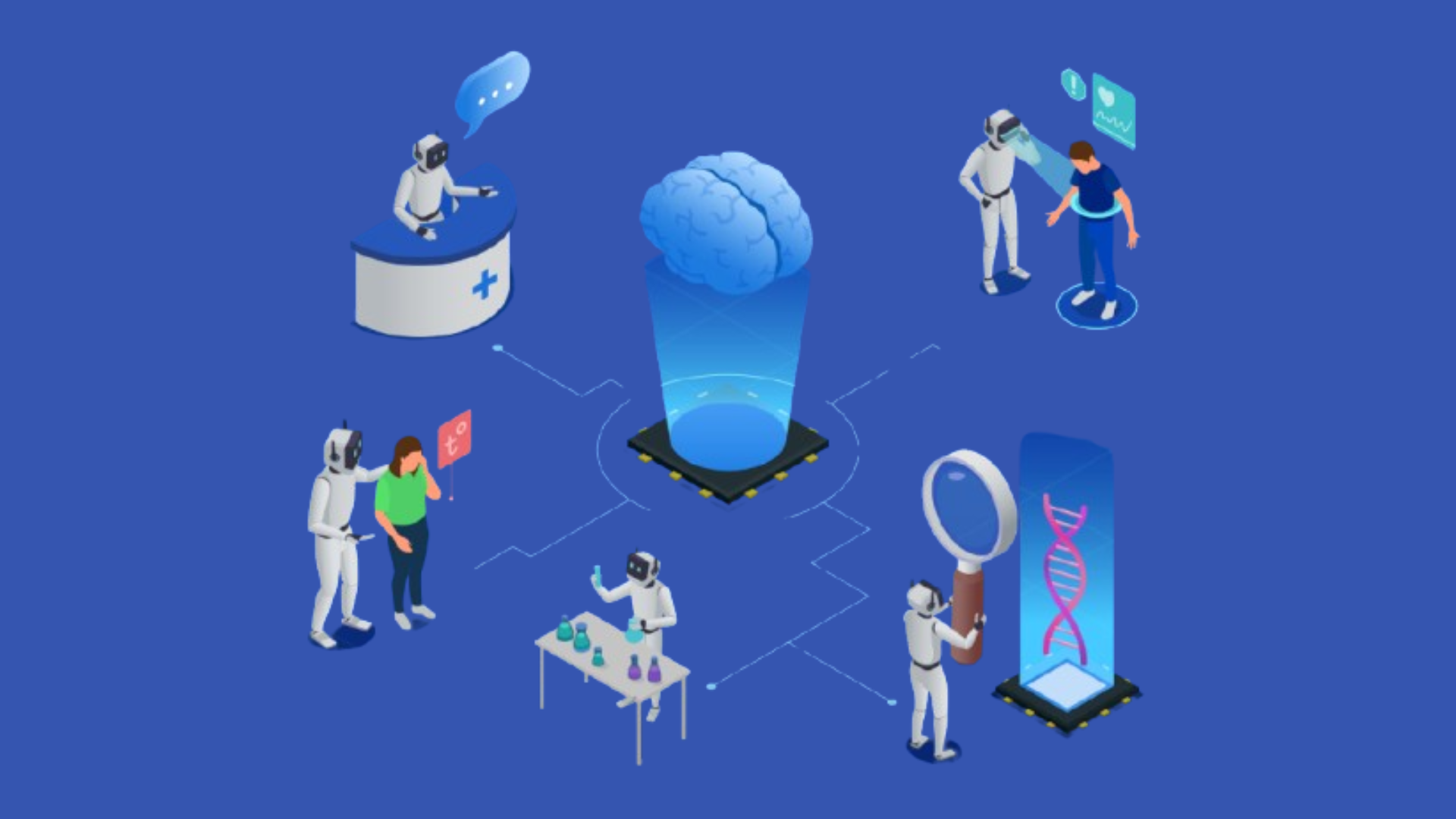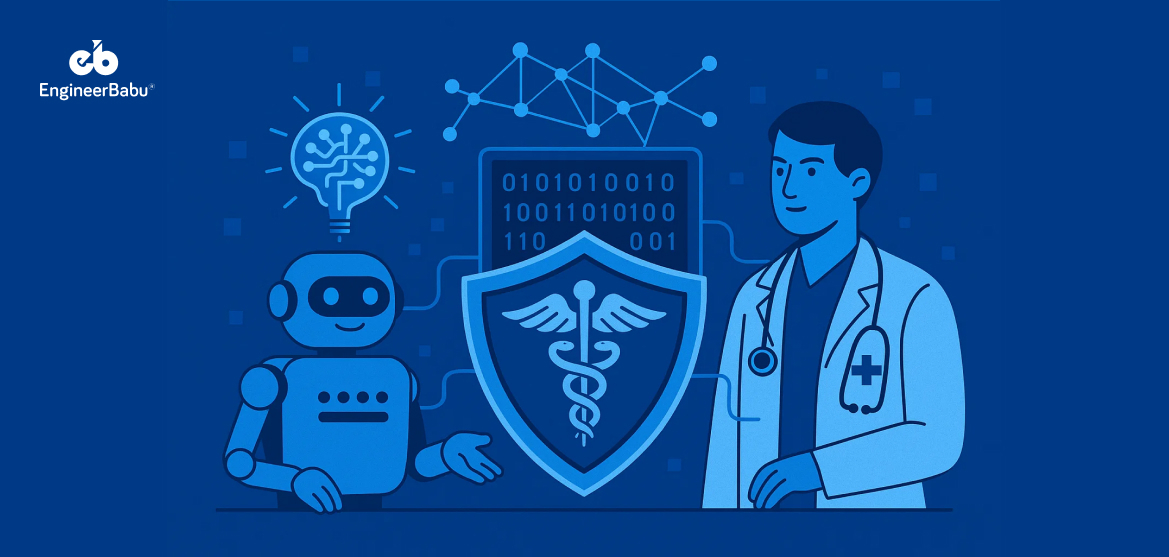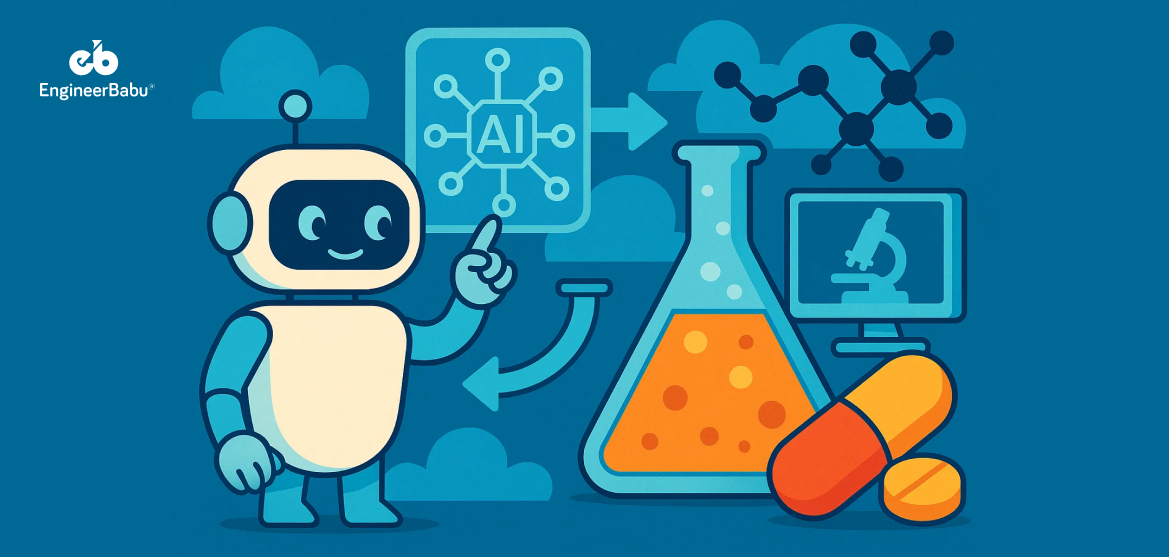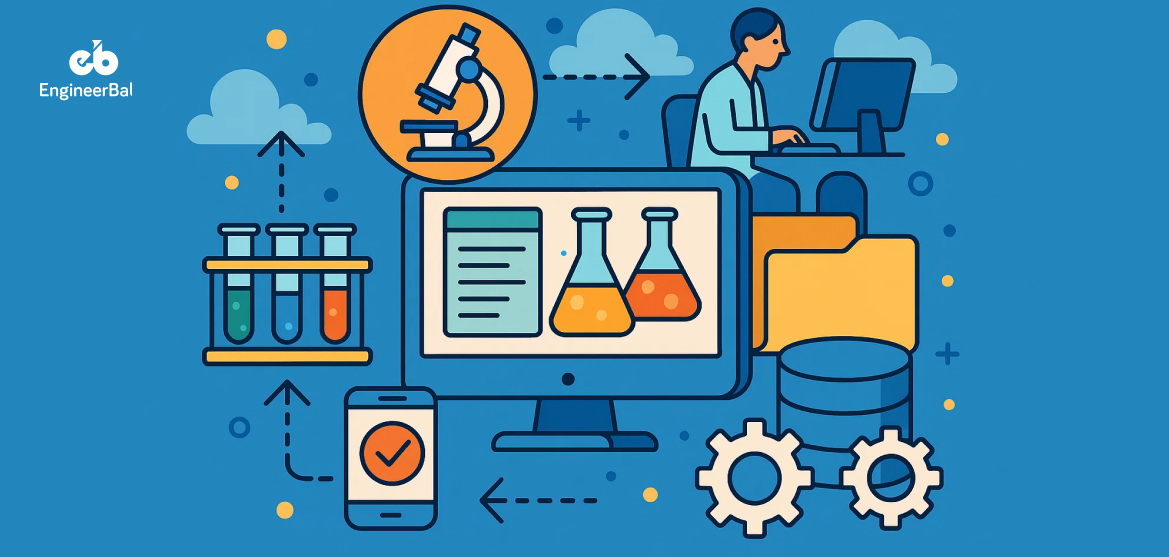Imagine saving hundreds of staff hours each week — not by hiring more people, but through smarter workflows.
Hospitals today are stretched thin. Staff burnout, patient backlogs, and administrative bottlenecks are everyday challenges. But artificial intelligence (AI) is changing that — and fast.
According to McKinsey, nearly 30% of healthcare tasks could be automated with AI. And when hospitals lean into it, the impact is immediate: faster diagnoses, shorter wait times, fewer manual errors, and more time for what matters most — patient care.
In this post, we break down the seven most powerful ways AI is reshaping hospital workflows and making healthcare smarter, faster, and more human.
1. Speeding Up Diagnoses with AI Imaging
AI is making medical imaging faster, more accurate, and less exhausting for clinicians.
🔹 What’s Happening:
AI models can interpret X-rays, MRIs, and CT scans in seconds — highlighting anomalies that need urgent attention.
🔹 Real-World Example:
At Mount Sinai, an AI system detects pneumonia on chest X-rays in just 30 seconds, compared to 20 minutes for a human radiologist.
🔹 Impact:
- Diagnoses up to 40% faster
- Earlier intervention
- Lower risk of human error during heavy workloads
Bottom line: AI doesn’t replace radiologists — it empowers them to work faster and catch critical issues sooner.
2. Reducing Patient Waiting Times with Predictive Analytics
Nobody likes waiting endlessly in an ER. AI helps fix that.
🔹 What’s Happening:
Predictive models analyze historical and real-time data (like flu trends, appointment history, and even local events) to forecast patient inflow and optimize scheduling.
🔹 Real-World Example:
The Cleveland Clinic used AI to boost outpatient appointment capacity by 19% and cut emergency room wait times by up to 35%.
🔹 Impact:
- Faster care delivery
- Higher patient satisfaction
- Reduced staff stress during peak hours
Bottom line: With better foresight, hospitals can plan staffing and resources before surges happen.
3. Automating Medical Documentation
Paperwork is a leading cause of physician burnout — but AI is easing the burden.
🔹 What’s Happening:
AI voice recognition and natural language processing (NLP) tools listen to conversations and automatically update Electronic Health Records (EHRs).
🔹 Real-World Example:
Stanford Hospital adopted AI-powered dictation tools that saved doctors 2+ hours per shift.
🔹 Impact:
- Documentation time cut by up to 70%
- More time spent with patients
- Improved clinical accuracy and compliance
Bottom line: Less typing, more healing.
4. Optimizing Staffing with AI Forecasting
Having the right number of staff at the right time is critical — and AI helps hospitals get it just right.
🔹 What’s Happening:
AI algorithms predict staffing needs based on anticipated patient volumes, historical admission patterns, and seasonal trends.
🔹 Real-World Example:
Mercy Health used AI workforce planning tools to improve nurse-patient ratios and saw 11-17% savings in labor costs.
🔹 Impact:
- Better staff-to-patient ratios
- Less overtime and burnout
- Smoother care delivery even during high-demand periods
Bottom line: Smart staffing leads to happier teams and healthier patients.
5. AI-Powered Triage and Virtual Assistants
First impressions matter — and AI is now often the first point of contact.
🔹 What’s Happening:
AI chatbots and virtual assistants guide patients to the right departments based on symptoms, medical history, and urgency.
🔹 Real-World Example:
The Mayo Clinic’s AI triage chatbot successfully handled over 10,000+ patient interactions weekly, resolving 70% without human intervention.
🔹 Impact:
- Faster patient routing
- Reduced load on front-desk staff
- Improved first-contact experience for patients
Bottom line: AI triage systems put patients on the right path faster, improving outcomes from the start.
6. Preventing Readmissions with Predictive AI
Not every discharged patient is “out of the woods” — AI helps hospitals stay a step ahead.
🔹 What’s Happening:
Predictive models analyze patient risk factors and alert care teams to those at higher risk of being readmitted within 30 days.
🔹 Real-World Example:
Geisinger Health reduced avoidable readmissions by 12-20% using AI insights to guide proactive post-discharge follow-up.
🔹 Impact:
- Healthier patients
- Lower healthcare costs
- Fewer penalties for hospitals (in systems where readmission rates affect funding)
Bottom line: Predictive AI helps deliver care that extends beyond hospital walls.
7. Smarter Inventory and Supply Chain Management
Running out of crucial supplies — or overstocking expensive drugs — can be devastating. AI brings balance.
🔹 What’s Happening:
AI predicts future supply needs based on usage patterns, seasonal illness trends, and treatment protocols.
🔹 Real-World Example:
Intermountain Healthcare used AI forecasting to save $10M annually by reducing supply waste and avoiding stockouts.
🔹 Impact:
- Fewer critical shortages
- Less money tied up in unused inventory
- Greater operational efficiency
Bottom line: With AI, hospitals can treat patients — not guess at supply needs.
Case Studies: How AI is Already Transforming Hospitals
1. Mayo Clinic – Early Cancer Detection with AI Imaging
Challenge: Rising volumes in radiology led to delays and diagnostic fatigue, risking missed early-stage cancers.
Solution:
Mayo Clinic integrated an AI platform that highlighted probable cancerous lesions on scans, helping radiologists prioritize cases.
Results:
- 40% faster scan reviews
- Over 90% sensitivity in early cancer detection
- Decreased cognitive load on radiologists
- Improved early treatment outcomes
Key Insight:
AI augmented expert judgment, making radiologists faster and sharper — not obsolete.
2. Cleveland Clinic – Predictive Staffing and Patient Flow
Challenge: Bottlenecks in ER and fluctuating patient volumes overwhelmed manual scheduling.
Solution:
An AI system forecasted patient arrivals based on historic data, local factors, and seasonal illnesses.
Results:
- 28% drop in ER wait times
- 23% reduction in nurse overtime
- Smoother patient throughput and happier staff
Key Insight:
Predicting the future pays off — literally and figuratively.
Conclusion: AI is the Future of Hospital Efficiency
AI is no longer a futuristic concept — it’s actively reshaping hospital operations today.
From intelligent triage to predictive staffing to faster diagnoses, AI is helping hospitals improve efficiency, cut costs, and deliver better patient experiences. The key to success? Combining smart technologies with deep healthcare expertise.
At EngineerBabu, we help healthcare providers build custom AI-driven apps and platforms that fit their unique workflows — not the other way around. If you’re ready to future-proof your hospital, let’s build it together.
FAQs on How AI Transforms Hospital Workflows
Q1. How exactly does AI improve hospital workflows?
AI improves hospital workflows by automating manual tasks, enhancing diagnostic accuracy, optimizing staffing, predicting patient needs, and streamlining administrative processes.
Q2. Can AI help hospitals reduce costs?
Absolutely. By cutting down on overtime, reducing supply waste, minimizing errors, and improving operational efficiency, AI helps hospitals save significant operational costs.
Q3. Will AI replace doctors and nurses?
No. AI is designed to assist healthcare professionals by taking over repetitive tasks and offering data-driven insights, allowing them to focus more on patient care and critical decision-making.
Q4. What are the biggest challenges hospitals face when implementing AI?
Challenges include data privacy compliance, integration with existing systems, staff training, and the need for healthcare-specific AI models that are both accurate and interpretable.
Q5. How can a hospital start integrating AI into its systems?
Hospitals can start by partnering with experienced healthcare app development firms like EngineerBabu, who understand clinical workflows and can build custom AI solutions tailored to real-world needs.




